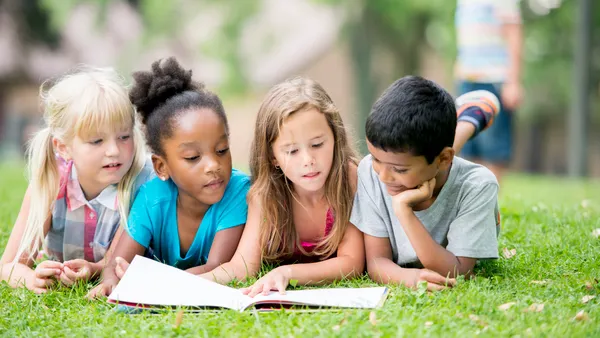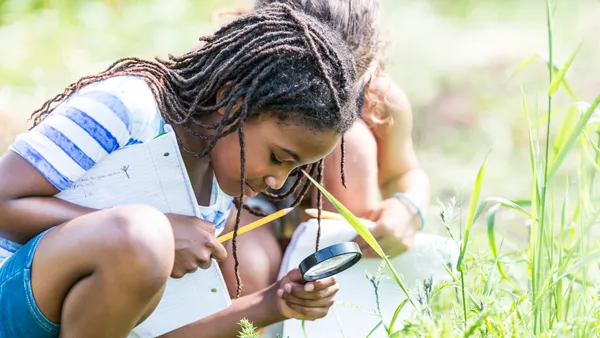Dive Brief:
- By having his 9th-grade students build a tiny home for the homeless, Tacoma, Washington, teacher Joe Romano said every member of his architecture and design class developed collaborative skills, he wrote in EdSurge.
- The students learned architecture, design and carpentry skills and concepts; conducted site visits and studied existing houses; and worked with computer-aided design software, a professional tool used by architects and engineers, Romano wrote. In addition, class members practiced seeing themselves as designers and problem-solvers in constructing a solution over a five-month time frame.
- Students each had opportunities to lead at different points of the process, and peers gave each other both positive and constructive feedback throughout the course. Romano also pushed each person to self-reflect over the course of the build, he wrote, which helped them reflect on their work and what kind of impact they felt they were able to make on their community, he wrote.
Dive Insight:
Hands-on opportunities can play important roles in hammering home concepts that students are learning in the classroom. These can be applied across multiple disciplines — from science and technology to English language arts — and, when done effectively, can impart social-emotional learning (SEL) skills including communication and collaboration, especially with projects where students must find ways to work together.
Projects like the one Romano's class completed also help students see how the work they do can have a broad impact on their communities. By pushing back against the four walls of the classroom and taking student learning into the world at large, curriculum administrators can also help to engage students, excite them about what they’re studying and see purpose in their schoolwork.
Think of this as the why of learning, which is about showing students that what they study has a greater impact than just earning a grade. Tying classroom studies to a positive real-world result can also help students connect to their lessons, find their passions and increase their skill set for the workforce — as well as potentially help them avoid burnout.
Tying schoolwork to a community need can also draw students' attention to volunteering and, in turn, foster development of SEL skills including empathy. But it’s crucial for curriculum designers and administrators to make sure the volunteer work they weave into classwork ties into lessons to make sure students see the connection and the relevancy. But if well-integrated and executed effectively, these multi-tiered lessons and experiences can have positive effects on students' potential and ability to make an impact — both now and in the future.










